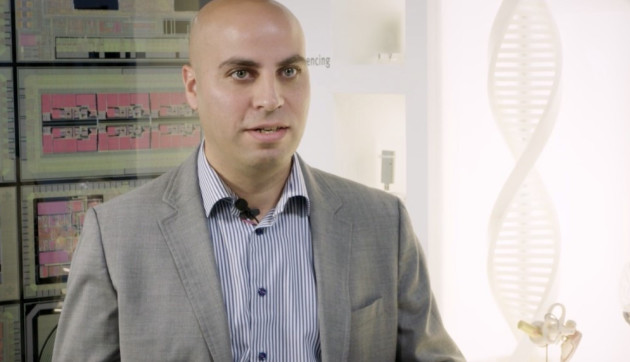 Dr Tim Constandinou is deputy director of the Centre for Bio-Inspired Technology. He and his team are creating innovative ‘neural interfaces’ to enable communication between the body’s nervous system and electronic devices.
Dr Tim Constandinou is deputy director of the Centre for Bio-Inspired Technology. He and his team are creating innovative ‘neural interfaces’ to enable communication between the body’s nervous system and electronic devices.
Neural interfaces are small devices implanted in the body, or worn externally, that can record or stimulate activity in the brain and nervous system.
Tim’s current projects target healthcare applications in brain machine interfaces — epilepsy, sleep and dementia. “My ultimate goal is to develop medical devices that interface with neural pathways for restoring lost function in sensory, cognitive and motor impaired patients."
Within the next 20 years Tim thinks neural interfaces could become an established option to help people walk after paralysis, and tackle treatment-resistant depression.
He suggests we will see neural interface applications in “bioelectronic medicine” — devices that offer therapies by interfacing with nerves in our body. These could be used to address conditions that may not normally be associated with the nervous systems such as rheumatoid arthritis, Crohn’s disease and multiple sclerosis.
My favourite phrase which describes engineering is from one of my colleagues, Christos Papavassiliou — ‘making today’s magic, tomorrow’s technology.’"
Brain to computer communication may feel like somewhere between magic and science fiction, but Tim explains that outside of healthcare “we’re already seeing examples of neural interfaces in consumer electronics — brain training, mindfulness, sleep monitoring. There are some major efforts looking at brain computer interfaces — devices that allow us to “control” something just by thinking about it, maybe a tv, a computer cursor, or interacting with a smart home.”
Mind and machine
Technologies that “blur the lines between mind and machine” will always raise ethical, political, social and commercial questions. Tim has been leading the iHuman perspective with the Royal Society, producing a report which has urged the UK Government to take a global lead understanding the ethical risks, and the regulations needed, to ensure these emerging technologies are implemented safely.
“For medical applications there are already strong ethical considerations in place. For non-medical applications, the ethical issues are something we need to seriously consider early on, especially if this technology changes the way we interact with the world and each-other, or we venture into "human enhancement”.
“If a person uses neural interfaces to do something will it be the person doing it, or the technology? That raises questions about our autonomy and our perception of “normality.”
Promoting diversity
Within engineering generally, Tim believes we need to identify and promote more diverse and inclusive role models. “I think institutions, our sector, and professional organisations should be more pro-active in identifying successes. Many awards — which come with good publicity — are through “nominations” some of which are self-nominated, or through networks.”
“All too often the “success stories” we hear depend on the individual’s ability to promote their achievements. It may be that people from a "non-typical" background are not so familiar or forthcoming with showcasing their successes, therefore we may need to apply more of a “pull” to identify a broader set of role models, rather than relying on individuals to “push”.”